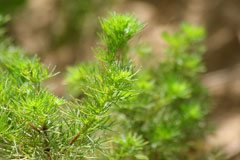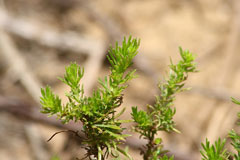 |
|
http://flickr.com/photos/8518936@N05 |
 |
| http://flickr.com/photos/8518936@N05 |
Translate this page:
Summary
Physical Characteristics

 Artemisia capillaris is a deciduous Shrub growing to 0.5 m (1ft 8in) by 0.5 m (1ft 8in).
Artemisia capillaris is a deciduous Shrub growing to 0.5 m (1ft 8in) by 0.5 m (1ft 8in).
See above for USDA hardiness. It is hardy to UK zone 7. It is in flower from August to October, and the seeds ripen from September to October. The species is hermaphrodite (has both male and female organs) and is pollinated by Wind.
Suitable for: light (sandy) and medium (loamy) soils and prefers well-drained soil. Suitable pH: neutral and basic (mildly alkaline) soils. It can grow in semi-shade (light woodland) or no shade. It prefers dry or moist soil and can tolerate drought. The plant can tolerates strong winds but not maritime exposure.
UK Hardiness Map
US Hardiness Map
Synonyms
Plant Habitats
Cultivated Beds;
Edible Uses
Edible Parts: Leaves
Edible Uses:
Leaves and stems - soaked and boiled[177].
References More on Edible Uses
Medicinal Uses
Plants For A Future can not take any responsibility for any adverse effects from the use of plants. Always seek advice from a professional before using a plant medicinally.
Antibacterial Anticholesterolemic Antiviral Cholagogue Diuretic Febrifuge Hepatic Vasodilator
Yin Chen Hao has been used in Chinese herbal medicine for over 2,000 years. It is considered to be a bitter and cooling herb, clearing "damp heat" from the liver and gall ducts and relieving fevers[254]. It is an effective remedy for liver problems, being specifically helpful in treating hepatitis with jaundice[254]. Modern research has confirmed that the plant has a tonic and strengthening effect upon the liver, gallbladder and digestive system[254]. The leaves and young shoots are antibacterial, anticholesterolemic, antiviral, cholagogue, diuretic, febrifuge and vasodilator[147, 176, 178, 218]. An infusion is used internally in the treatment of jaundice, hepatitis, gall bladder complaints and feverish illnesses[238]. Externally it has been applied in the form of a plaster for treating headaches[254]. The plant is harvested in late spring and can be dried for later use[238]. Yin Chen Hao is contraindicated for pregnant women[254].
References More on Medicinal Uses
The Bookshop: Edible Plant Books
Our Latest books on Perennial Plants For Food Forests and Permaculture Gardens in paperback or digital formats.

Edible Tropical Plants
Food Forest Plants for Hotter Conditions: 250+ Plants For Tropical Food Forests & Permaculture Gardens.
More

Edible Temperate Plants
Plants for Your Food Forest: 500 Plants for Temperate Food Forests & Permaculture Gardens.
More

More Books
PFAF have eight books available in paperback and digital formats. Browse the shop for more information.
Shop Now
Other Uses
References More on Other Uses
Cultivation details
An easily grown plant, succeeding in a well-drained circumneutral or slightly alkaline loamy soil, preferring a sunny position[1, 200]. Established plants are drought tolerant[200]. Plants are longer lived, more hardy and more aromatic when they are grown in a poor dry soil[245]. This species is probably not hardy in all parts of Britain, it tolerates temperatures down to at least -5°c[238]. Plants in this genus are notably resistant to honey fungus[200]. Members of this genus are rarely if ever troubled by browsing deer[233].
References Carbon Farming Information and Carbon Sequestration Information
Temperature Converter
Type a value in the Celsius field to convert the value to Fahrenheit:
Fahrenheit:
The PFAF Bookshop
Plants For A Future have a number of books available in paperback and digital form. Book titles include Edible Plants, Edible Perennials, Edible Trees,Edible Shrubs, Woodland Gardening, and Temperate Food Forest Plants. Our new book is Food Forest Plants For Hotter Conditions (Tropical and Sub-Tropical).
Shop Now
Plant Propagation
Seed - surface sow from late winter to early summer in a greenhouse[200]. When large enough to handle, prick the seedlings out into individual pots and plant them out in the summer. Cuttings of half-ripe wood, July/August in a frame. Division in spring or autumn.
Other Names
If available other names are mentioned here
Native Range
TEMPERATE ASIA: Afghanistan, Mongolia, Russian Federation-Far East (Far East), China, Korea, Japan, Taiwan TROPICAL ASIA: India (north), Pakistan, Philippines
Weed Potential
Right plant wrong place. We are currently updating this section.
Please note that a plant may be invasive in one area but may not in your area so it's worth checking.
Conservation Status
IUCN Red List of Threatened Plants Status :

| Related Plants
|
| Latin Name | Common Name | Habit | Height | Hardiness | Growth | Soil | Shade | Moisture | Edible | Medicinal | Other |
| Artemisia abrotanum | Southernwood | Shrub | 1.2 |
4-8
| | LMH | SN | DM | 1 | 3 | 3 |
| Artemisia absinthium | Wormwood, Absinthium. | Perennial | 1.0 |
4-9
| M | LM | SN | DM | 1 | 3 | 3 |
| Artemisia annua | Qing Hao, Sweet sagewort | Annual | 3.0 |
6-9
| F | LM | SN | DM | 1 | 4 | 2 |
| Artemisia anomala | | Perennial | 1.0 |
-
| | LMH | SN | M | 0 | 2 | |
| Artemisia arborescens | Tree Wormwood | Shrub | 1.0 |
8-10
| F | LM | N | DM | 0 | 2 | 3 |
| Artemisia argyi | | Perennial | 1.5 |
-
| | LM | SN | DM | 0 | 2 | |
| Artemisia biennis | Biennial Wormwood | Annual/Biennial | 1.0 |
3-8
| | LM | SN | DM | 1 | 1 | 1 |
| Artemisia californica | California Sagebrush | Shrub | 2.0 |
7-10
| F | LM | N | DM | 0 | 2 | 3 |
| Artemisia campestris | Field Southernwood | Perennial | 1.5 |
3-8
| | LM | SN | DM | 1 | 2 | 1 |
| Artemisia campestris glutinosa | | Perennial | 1.5 |
-
| | LM | SN | DM | 0 | 0 | 1 |
| Artemisia carruthii | Carruth Wormwood | Perennial | 0.4 |
4-9
| M | LM | N | DM | 1 | 0 | 0 |
| Artemisia caruifolia | | Annual | 1.0 |
-
| | LM | SN | DM | 1 | 3 | 1 |
| Artemisia cina | Cina, Santonica | Shrub | 1.0 |
0-0
| | LM | S | DM | 0 | 3 | |
| Artemisia dracunculoides | Russian Tarragon, Tarragon, French Tarragon | Perennial | 1.0 |
5-8
| M | LM | SN | DM | 2 | 1 | 3 |
| Artemisia dracunculus | Tarragon, French Tarragon | Perennial | 0.6 |
5-9
| M | LM | SN | DM | 4 | 2 | 3 |
| Artemisia filifolia | Sand Sage, Sand sagebrush | Shrub | 1.2 |
3-7
| | LM | SN | DM | 0 | 2 | 1 |
| Artemisia frigida | Fringed Wormwood, Prairie sagewort | Perennial | 0.3 |
3-8
| | LM | N | DM | 2 | 2 | 3 |
| Artemisia glacialis | Glacier Wormwood | Perennial | 0.2 |
4-8
| | LMH | N | DM | 1 | 2 | |
| Artemisia gmelinii | Russian Wormwood, Gmelin's wormwood | Perennial | 1.5 |
3-7
| | LMH | N | DM | 1 | 1 | 2 |
| Artemisia herba-alba | White Wormwood | Shrub | 0.3 |
7-10
| F | LM | N | DM | 0 | 3 | 3 |
| Artemisia indica | | Annual/Perennial | 1.2 |
6-9
| | LM | SN | DM | 1 | 3 | 2 |
| Artemisia japonica | | Perennial | 1.0 |
7-10
| | LMH | SN | DM | 1 | 2 | 1 |
| Artemisia keiskeana | | Perennial | 0.6 |
-
| | LMH | SN | DM | 2 | 1 | 2 |
| Artemisia laciniata | Siberian wormwood | Perennial | 0.0 |
0-0
| | LMH | SN | DM | 1 | 0 | |
| Artemisia lactiflora | White Mugwort | Perennial | 1.5 |
4-8
| S | LMH | SN | M | 0 | 2 | |
| Artemisia lancea | | Perennial | 1.2 |
-
| | LMH | SN | DM | 1 | 1 | |
| Artemisia ludoviciana | White Sage, Louisiana Sage, Prairie Sage, Western Mugwort | Perennial | 1.0 |
3-9
| M | LM | SN | DM | 2 | 2 | 2 |
| Artemisia ludoviciana gnaphalodes | White Sage | Perennial | 1.0 |
4-8
| | LM | SN | DM | 0 | 2 | 1 |
| Artemisia maritima | Sea Wormwood | Shrub | 0.6 |
6-9
| | LM | N | DM | 1 | 2 | 1 |
|
|
Growth: S = slow M = medium F = fast. Soil: L = light (sandy) M = medium H = heavy (clay). pH: A = acid N = neutral B = basic (alkaline). Shade: F = full shade S = semi-shade N = no shade. Moisture: D = dry M = Moist We = wet Wa = water.
Now available:
Food Forest Plants for Mediterranean Conditions
350+ Perennial Plants For Mediterranean and Drier Food Forests and Permaculture Gardens.
[Paperback and eBook]
This is the third in Plants For A Future's series of plant guides for food forests tailored to
specific climate zones. Following volumes on temperate and tropical ecosystems, this book focuses
on species suited to Mediterranean conditions—regions with hot, dry summers and cool, wet winters,
often facing the added challenge of climate change.
Read More
Expert comment
Author
Thunb.
Botanical References
58266
Links / References
For a list of references used on this page please go here
Readers comment
© 2010, Plants For A Future. Plants For A Future is a charitable company limited by guarantee, registered in England and Wales. Charity No. 1057719, Company No. 3204567.